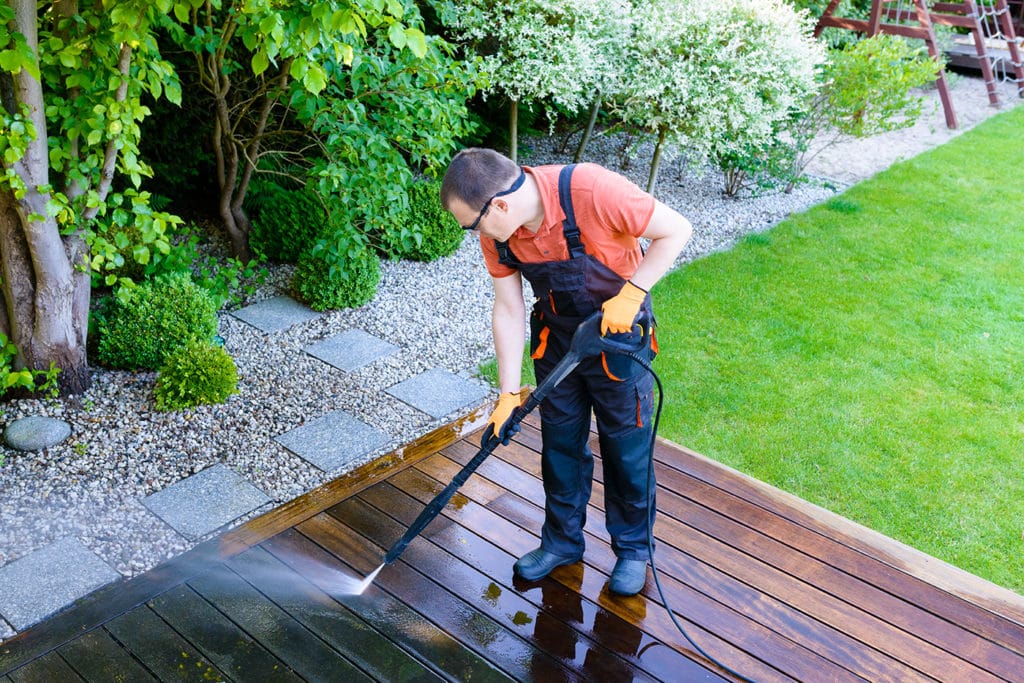What’s the best way to clean my deck before re-staining?
Quick Tips To Help You Prepare Your Deck Before You Re-Stain It
- Remove everything from your deck and sweep off all dirt and debris. Check all structural elements for damage. Replace any damaged boards, tighten any loose boards or screws and fix any nail pops.
- There are the variety of deck cleaning products available. Some are detergents, others are bleaches, and still others are chemical solutions designed to react with certain woods. Whatever cleaner you choose, read and follow the manufacturer’s directions.
- Many cleaners can be easily applied with a pump-style garden sprayer following the manufacturer’s instructions. It’s advisable to test in a small, less visible spot first before cleaning the entire deck.
- Sometimes lightly watering down the deck can assist you in applying and spreading the cleaning solution. Many solutions should not be allowed to dry on the wood so periodic spraying/misting may be required. Depending on how dirty your deck is you may see results immediately. But many cleaning compounds require a few minutes to work before you see results.
- Depending on the cleaner you select and the amount of algae on your deck, you can use a stiff brush with a long handle (typically a synthetic bristle brush since many cleaning solutions will deteriorate a natural bristle brush) and a regular garden hose or you can use a pressure washer.
Final Steps for Prepping Your Deck to Stain
Once you’ve cleaned your deck well, let it dry for 12 to 24 hours and you’re ready to sand. Using a pole sander makes this job much easier and saves your knees. Use 120 to 150 grit sandpaper and sand in the direction of the wood grain. Most likely you won’t need to sand your spindles or railings because vertical surfaces don’t wear as fast.
When the sanding is finished, use a leaf blower, broom or wet/dry vac to thoroughly remove the dust, and your deck is ready for staining. You should stain or seal it as quickly as possible after you have sanded to protect it from the elements.
REMEMBER: Check your state and local codes before starting any project. Follow all safety precautions. Every effort has been made to ensure the accuracy and safety of this information. Neither Westlake nor any contributor can be held responsible for damages or injuries resulting from the use of the information in this document.

